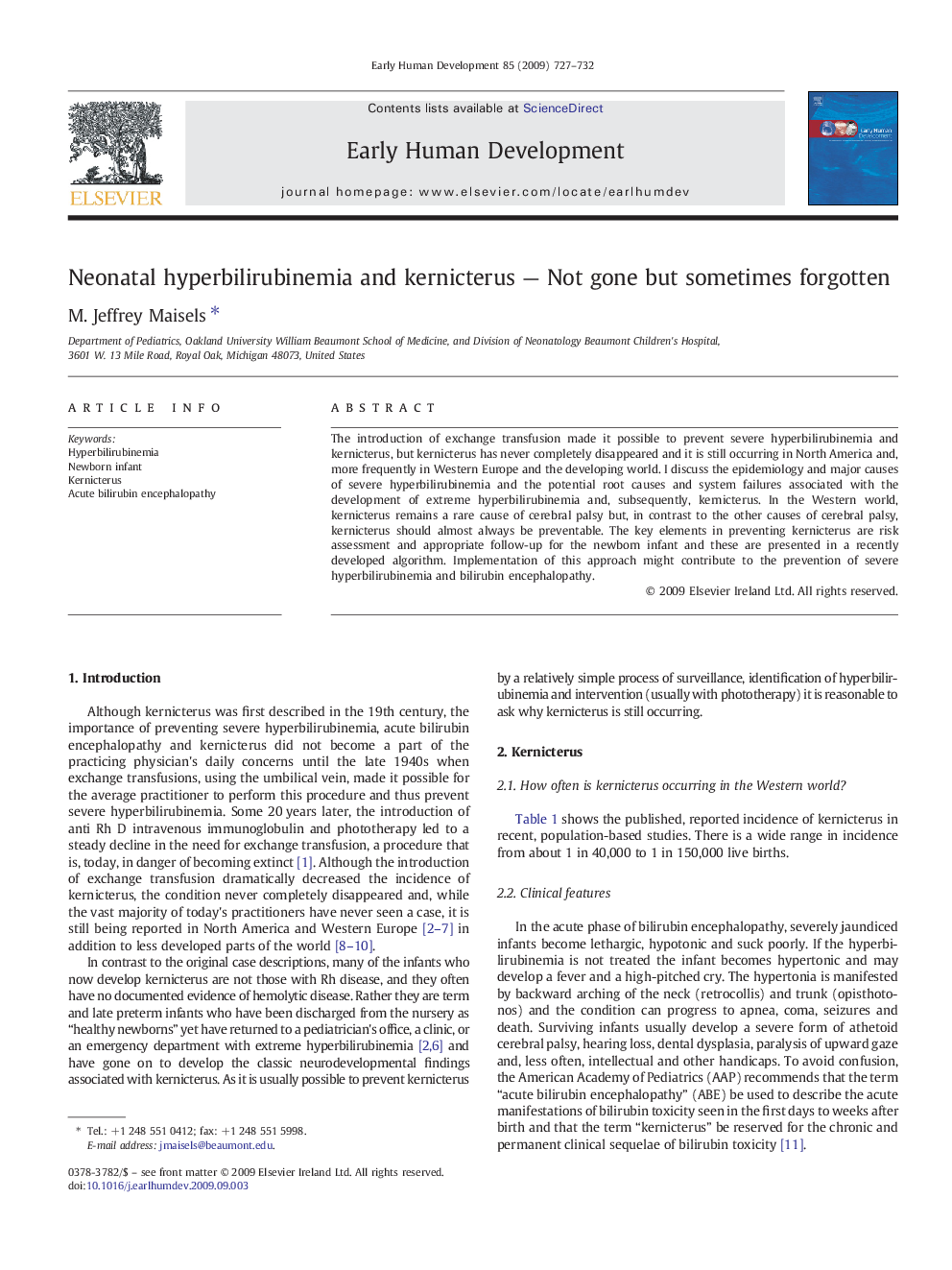| Article ID | Journal | Published Year | Pages | File Type |
|---|---|---|---|---|
| 3917714 | Early Human Development | 2009 | 6 Pages |
The introduction of exchange transfusion made it possible to prevent severe hyperbilirubinemia and kernicterus, but kernicterus has never completely disappeared and it is still occurring in North America and, more frequently in Western Europe and the developing world. I discuss the epidemiology and major causes of severe hyperbilirubinemia and the potential root causes and system failures associated with the development of extreme hyperbilirubinemia and, subsequently, kernicterus. In the Western world, kernicterus remains a rare cause of cerebral palsy but, in contrast to the other causes of cerebral palsy, kernicterus should almost always be preventable. The key elements in preventing kernicterus are risk assessment and appropriate follow-up for the newborn infant and these are presented in a recently developed algorithm. Implementation of this approach might contribute to the prevention of severe hyperbilirubinemia and bilirubin encephalopathy.
